Hengist And Horsa: Legendary Anglo-Saxon Warrior Brothers And Leaders Of First Settlers In Britain
A. Sutherland - AncientPages.com - According to very ancient poems, Odin's sons, Weldegg, Beldegg, Sigi, Skiold, Sæming, and Yngvi, became kings of Franconia, East Saxony, West Saxony, Sweden, Denmark, and Norway, and from them are descended the Saxons, Hengist and Horsa, and the royal families of the Northern lands.
 Hengist and Horsa arriving in Britain, by Richard Rowlands (1605). Public Domain
Hengist and Horsa arriving in Britain, by Richard Rowlands (1605). Public Domain
But one question is: who were the legendary warrior brothers Hengist and Horsa? Interesting is also whether they existed.
According to Anglo-Saxon tradition, these two heroes, Hengist and Horsa (meaning 'stallion' and 'horse'), were invited to Sub-Roman Britain by the British ruler Vortigern to help him defend against invading Scots and Picts attacking from the North.
After landing at "Wippidsfleet" (Ebbsfleet), Hengist and Horsa successfully drove off the invaders. It is said the two heroes played an essential part in the foundation of the kingdom of Kent.
Immediately after successfully fighting with the enemy, they received a land grant in Kent from Vortigern.
Hengist from John Speed's 1611 "Saxon Heptarchy". Image credit: Professor Liam Thompson - Public Domain
For ages after the arrival of the Saxons under the warlords Hengist and Horsa in 449 AD, the aboriginal inhabitants possessed the whole western coast of Britain. These people were engaged in continuous battles with the invaders.
Archaeological evidence has revealed traces of Germanic settlers in Canterbury in the late 300s; however, the main settlement probably took place in the 450s, under the leadership of the two warlord brothers, Hengest and Horsa.
Some historians have suggested that they are only mythical founding figures, divine twins like Romulus and Remus, rather than real people.
Hengest (also spelled Hengist) and Horsa are said to have been Jutes and sons of Wihtgils, a semi-legendary Jutish chieftain, according to the Anglo-Saxon Chronicle, one of the few literary sources for England's history during the period following the Roman presence and preceding the Norman invasion.
The brothers in Edward Parrott's Pageant of British History (1909). Image credit: Sir Edward Parrott - The Pageant of British History - Public Domain
According to the English historian and theologian Bede, the two brothers were Jutes, generally assumed to have come from Jutland in Denmark.
Hengest and Horsa arrived shortly after 449 with three shiploads of 'Angles or Saxons' at the invitation of Vortigern, king of the Britons (who flourished 425–450). They came to his allies to help him against the Picts, attacking from the North between 446 and 454 AD.
It needs to be specified, however, where, in Britain, this Vortigern had his seat. Was it located in the northwest, closer to the Picts region, or in the south?
The Chronicle also says that Hengest and Horsa fought against Katigern, the second son of Vortigern, near Epiford, and Horsa was killed at Aegelsthrep (possibly Aylesford, Kent) in 455.
The Venerable Bede mentions a monument to him located in east Kent; Horstead, near Aylesford, may be named for him; the Chronicle says that Hengist began to reign in 455 and that he fought against the Britons; it implies that Hengist died in 488.
Updated on Sep 19, 2023
Written by A. Sutherland - AncientPages.com Staff Writer
Copyright © AncientPages.com All rights reserved. This material may not be published, broadcast, rewritten or redistributed in whole or part without the express written permission of AncientPages.com
Expand for referencesReferences:
B. Yorke, Kings and Kingdoms of Early Anglo-Saxon England
More From Ancient Pages
-
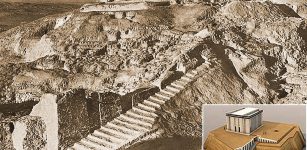 White Temple Of God Anu In Sacred Precinct Of Kullaba At Uruk
Civilizations | Oct 10, 2016
White Temple Of God Anu In Sacred Precinct Of Kullaba At Uruk
Civilizations | Oct 10, 2016 -
 Oldest Human Made Architectural Plans Detail Mysterious Desert Megastructures
Archaeology | May 18, 2023
Oldest Human Made Architectural Plans Detail Mysterious Desert Megastructures
Archaeology | May 18, 2023 -
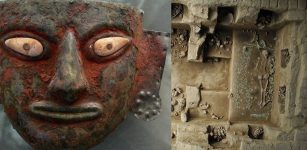 Lady Cao – Moche Queen Who Re-Wrote Ancient History
Civilizations | Jan 12, 2018
Lady Cao – Moche Queen Who Re-Wrote Ancient History
Civilizations | Jan 12, 2018 -
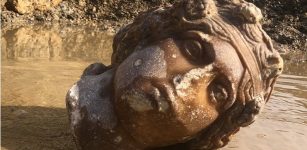 Statue Heads Of Dionysus And Aphrodite Discovered In The Ancient City Of Aizanoi
Archaeology | Dec 12, 2023
Statue Heads Of Dionysus And Aphrodite Discovered In The Ancient City Of Aizanoi
Archaeology | Dec 12, 2023 -
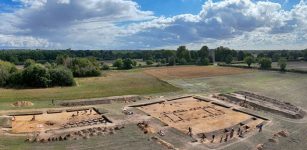 Huge 1,400-Year-Old Hall Of The First Kings Of East Anglia Discovered In Rendlesham
Archaeology | Oct 5, 2022
Huge 1,400-Year-Old Hall Of The First Kings Of East Anglia Discovered In Rendlesham
Archaeology | Oct 5, 2022 -
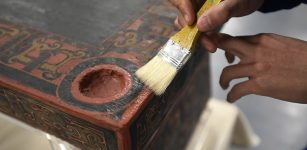 2,500-Year-Old ‘Dragon Bed’ Restored By Chinese Archaeologists
Archaeology | Jan 21, 2018
2,500-Year-Old ‘Dragon Bed’ Restored By Chinese Archaeologists
Archaeology | Jan 21, 2018 -
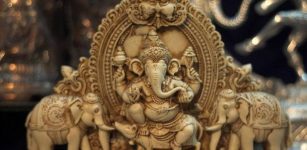 Ganesha: Elephant-Headed God Of Knowledge, Learning, Literature And Scribe Of The Mahabharata
Featured Stories | Aug 17, 2016
Ganesha: Elephant-Headed God Of Knowledge, Learning, Literature And Scribe Of The Mahabharata
Featured Stories | Aug 17, 2016 -
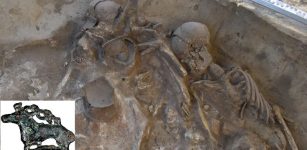 2,000-Year-Old Tumulus Of Unknown Culture Discovered In Siberia – Who Were These People?
Archaeology | Jan 4, 2023
2,000-Year-Old Tumulus Of Unknown Culture Discovered In Siberia – Who Were These People?
Archaeology | Jan 4, 2023 -
 Ephemeral Evidence Of Mediterranean Mobility – Boats, Migration, And The Central Mediterranean Passage In Focus
Archaeology | Dec 23, 2021
Ephemeral Evidence Of Mediterranean Mobility – Boats, Migration, And The Central Mediterranean Passage In Focus
Archaeology | Dec 23, 2021 -
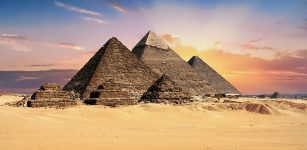 Amazing Discovery: Great Pyramid Of Giza And Its Chambers Concentrate Electromagnetic Energy
Archaeology | Jul 31, 2018
Amazing Discovery: Great Pyramid Of Giza And Its Chambers Concentrate Electromagnetic Energy
Archaeology | Jul 31, 2018 -
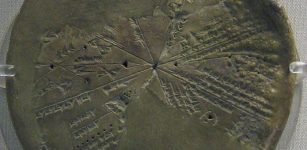 Assyrian King Ashurbanipal’s Great Library With Thousands Of Cuneiform Tablets
Civilizations | Dec 9, 2015
Assyrian King Ashurbanipal’s Great Library With Thousands Of Cuneiform Tablets
Civilizations | Dec 9, 2015 -
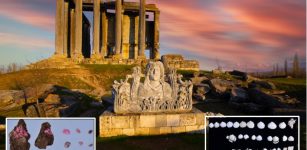 Roman Cosmetics Shop Discovered In The Ancient City Of Aizanoi, Turkey
Archaeology | Sep 29, 2023
Roman Cosmetics Shop Discovered In The Ancient City Of Aizanoi, Turkey
Archaeology | Sep 29, 2023 -
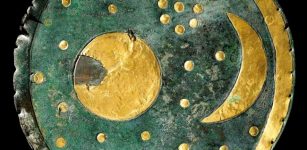 Nebra Disc – Artifact That Represents 3,600-Year-Old Astronomical Knowledge
Artifacts | May 26, 2014
Nebra Disc – Artifact That Represents 3,600-Year-Old Astronomical Knowledge
Artifacts | May 26, 2014 -
 Lilith – Beautiful Demonic And Brave Symbol Of Equality And Adam’s First Wife Who Refused Subordination
Biblical Mysteries | May 24, 2020
Lilith – Beautiful Demonic And Brave Symbol Of Equality And Adam’s First Wife Who Refused Subordination
Biblical Mysteries | May 24, 2020 -
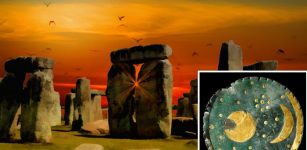 Dark History Of Pömmelte, The German Stonehenge – What Can The Nebra Sky Disc And Archaeology Reveal?
Archaeology | Jul 3, 2018
Dark History Of Pömmelte, The German Stonehenge – What Can The Nebra Sky Disc And Archaeology Reveal?
Archaeology | Jul 3, 2018 -
 Fascinating Ancient And Unexplained Mysteries Of Arizona – Secrets Of The Canyons And Mountains – Part 1
Featured Stories | Sep 29, 2024
Fascinating Ancient And Unexplained Mysteries Of Arizona – Secrets Of The Canyons And Mountains – Part 1
Featured Stories | Sep 29, 2024 -
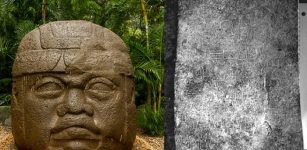 Mystery Of The Controversial Cascajal Block – Oldest Writing In The Americas
Artifacts | Oct 12, 2017
Mystery Of The Controversial Cascajal Block – Oldest Writing In The Americas
Artifacts | Oct 12, 2017 -
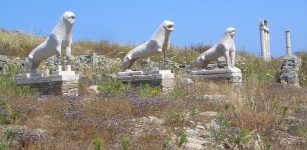 Mystery Of The Marble Lions On The Sacred Island Of Delos Solved?
Archaeology | Oct 12, 2021
Mystery Of The Marble Lions On The Sacred Island Of Delos Solved?
Archaeology | Oct 12, 2021 -
 Native Americans’ Visions Of Distant Explorers May Unravel Some Ancient Mysteries Of North America – The Arrival – Part 1
Featured Stories | Nov 19, 2019
Native Americans’ Visions Of Distant Explorers May Unravel Some Ancient Mysteries Of North America – The Arrival – Part 1
Featured Stories | Nov 19, 2019 -
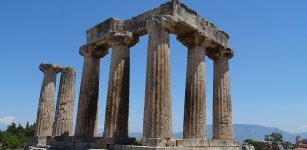 Ancient Greeks Had Knowledge Of Advanced Lifting Technology Long Before Modern Cranes Were Invented
Ancient Technology | Aug 29, 2019
Ancient Greeks Had Knowledge Of Advanced Lifting Technology Long Before Modern Cranes Were Invented
Ancient Technology | Aug 29, 2019


